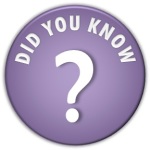Ballroom dancing has been bringing adventurous folk together in barrooms and court halls for centuries. But it’s only in the last century that most of the dances we know and love have appeared in North American studios. Why is that? And how did it all get started?
In an effort to help you sound smart as well as adventurous, here is a (VERY) short history of ballroom dance.
First Steps
In the beginning, there was ballet, and every ballroom dance we recognize today has been influenced by it’s movements. In the 17th century, ballet moved to the stage, leaving other dances to be performed at court that eventually resolved into the first ballroom dance we would recognize today, the slow waltz.
Like many early ballroom dances, waltz was considered ’most improper’, by the upper classes, as it involved holding the lady closely and facing her directly.
Liberty triumphed however, and waltz gradually become popular in all levels of society. Upon reaching Vienna in the 1780s, it was adapted to the faster tempos of famous composers like Johann Strauss, giving birth to the waltz’s hyper-active sister, the Viennese waltz.
The waltzes were joined in the early 1900s by a new partners-in-crime, the foxtrot and tango. Originally, the foxtrot was much more ‘trot-y’ than it is today, complete with kicks and hijinks. Tango too, was a very different dance when it migrated out of Buenos Aires, focusing on intricate foot movements with little traveling. Popularized by the famous dance couple Vernon and Irene Castle, both dances eventually became standardized in the middle of the century.
 Vernon was first well established as a comedic dancer. His specialty was pretending to be drunk, stumbling around the floor in an attempt to hide his condition.
Vernon was first well established as a comedic dancer. His specialty was pretending to be drunk, stumbling around the floor in an attempt to hide his condition.
Swinging Up a Storm
With the rise of jazz in the 1920s, a new breed of dances began to appear in African American communities: The Swing Era had begun. There were numerous styles of Swing, based on local origins and customs. One of the most popular, Lindy Hop, eventually gave birth to two offspring: East Coast Swing, danced to big band rock and roll, and the more easygoing West Coast Swing, to the sound of blues, jazz, and rock, among others.
Several styles merged with foxtrot, eventually creating the appropriately-named Quickstep. Still others were carried to England by American troops during World War II, where the rising optimism there churned out the spirited Jive.
Latin Dancing Takes the Stage
While much of the world was swinging into the night, other developments in music were taking place behind the scenes. Musicians from the Dominican Republic and Cuba had been quietly setting up shop in the U.S. They carried with them the seeds of Merengue and Rumba respectively.
 The song ‘The Peanut Vendor’ was originally called a rumba, which was more easily understood in English then it’s true name, son. The song became an international hit, and the label has stuck ever since.
The song ‘The Peanut Vendor’ was originally called a rumba, which was more easily understood in English then it’s true name, son. The song became an international hit, and the label has stuck ever since.
Around the same time, European and African dance styles were mingling in Brazil to create the Maxixe, which would eventually give birth to the ballroom Samba. As these dances began to take root in nightclubs throughout the States, they were to be joined by yet another migrant: Mambo.
Mambo sprung up during the 1940s, in response to new Cuban rhythms. It had no basic steps whatsoever, and to dance it one had to ‘feel the music’. Naturally, the more structured American dance instructors felt this to be completely undisciplined, and set about standardizing it as a sell-able commodity.
Now, both Mambo and it’s variant, Salsa, are two of the most popular dances in North America today.
 ‘American’ and ‘International’ styles of dance originated in America and England respectively. International tends to dominate the competitive scene, while American is danced more socially.
‘American’ and ‘International’ styles of dance originated in America and England respectively. International tends to dominate the competitive scene, while American is danced more socially.
Thanks to Lynn Nicoll-Griffith for suggesting this topic!

Thank you.
Quick and easy read.